Identifying Ammunition Type By Tip Color
We consistently get questions regarding ammo tip color; in this “What Bullet Tip Colors Mean on Ammo” blog post, we will shed some light on this subject. When it comes to ammunition, the presence of differently colored tips on certain rounds signifies a different type of round. These color-coded markings serve a practical purpose, conveying important information about the type and purpose of each round. This guide will explore the meanings behind bullet tip colors and their significance in ammunition.
Table of contents
- Identifying Ammunition Type By Tip Color
- History of Color-Coding Ammunition Identification
- Meaning of Different Bullet Tip Colors
- Importance of Bullet Tip Color Coding
- Differences Between Colored Tip and Non-Colored Ammunition
- Overview of Color-Coded Bullet Systems in Different Countries
- Legal Considerations and Restrictions with Colored Tip Ammo
- ATF Regulations on Colored Tip Ammo
- Shooting Range Restrictions
- Exploring Other Types of Tipped Ammunition
- Understanding Tracer Rounds and Their Uses
- Polymer-Tipped Bullets and Their Benefits
- Conclusion: Understanding What Bullet Tip Colors Mean on Ammo
- FAQs: Understanding What Bullet Tip Colors Mean on Ammo
History of Color-Coding Ammunition Identification
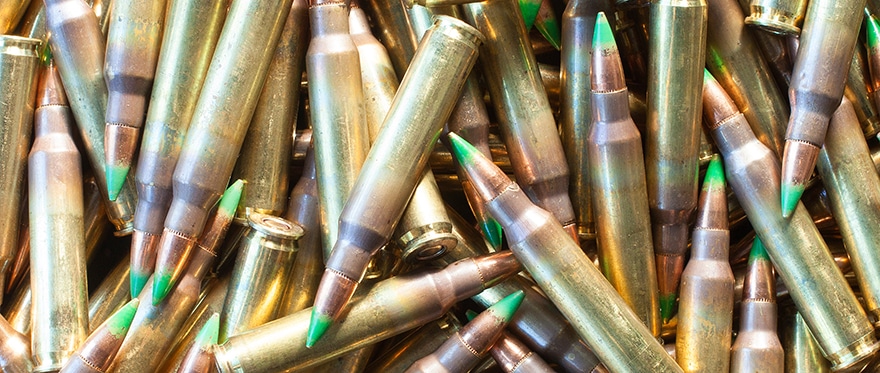
When it comes to ammunition identification, color coding has a rich history. Identifying different types of ammunition was a challenge in the past as early cartridges looked similar, leading to potentially wrong ammo being loaded. To address this issue, color-coding systems were developed to provide a clear and standardized method of identifying ammunition types.
Origins Of Ammo Tip Coloring
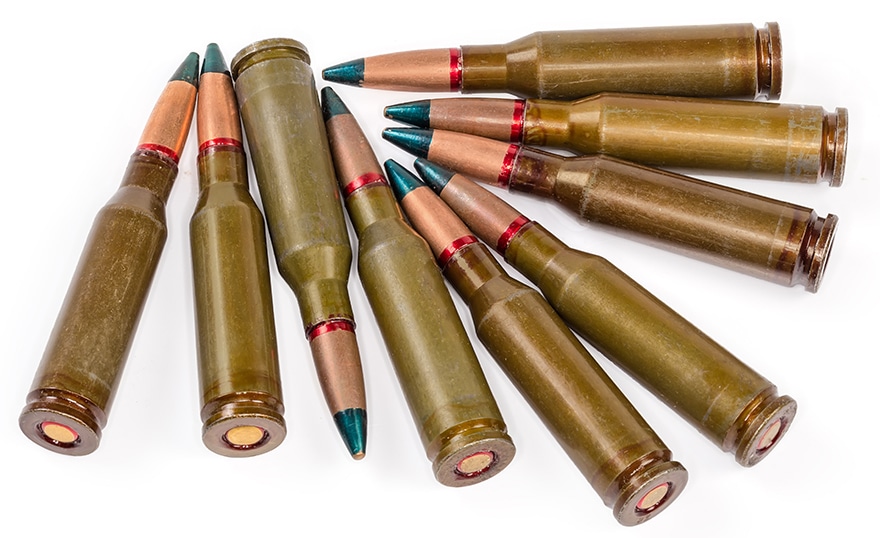
The British Royal Navy was one of the pioneers in adopting color coding for ammunition identification in the mid-19th century. They began marking different shell types with colored bands, quickly spreading worldwide. This color-coding system significantly improved safety and efficiency in identifying ammunition types, ensuring the correct rounds were used in various
situations. This practice carried over to magazines capable of feeding multiple calibers, being labeled with colored bands to identify the caliber in the magazine.
While color-coding practices have become more standardized, it is important to note that specific color codes can vary between countries and manufacturers. Despite this variation, the purpose of color-coding remains consistent – to quickly convey important information about the type and purpose of each ammunition.
Examples of Country Ammunition Color Coding
| Country/Manufacturer | Color-Coding System |
|---|---|
| British Royal Navy | Colored bands on shell types |
| Russian Military | Black and red tips for armor-piercing/incendiary rounds, violet and red tips for armor-piercing/incendiary/tracer rounds |
| China | Black and red tips for armor-piercing/incendiary rounds, green tips for tracer rounds |
| Israel | Combination of bullet tip color and primer annulus color coding for various bullet types |
| NATO Countries | Red for tracer rounds, black for armor-piercing rounds, silver for armor-piercing/incendiary, green for steel core rounds, blue for incendiary rounds, yellow for observation rounds, yellow-red for observation/tracer rounds, and orange for dark ignition tracer rounds |
Meaning of Different Bullet Tip Colors
The bullet tip color on ammunition indicates the type and purpose of the rounds. While there can be variations in color coding practices among different manufacturers and countries, certain general meanings can be identified. It’s important to note that these meanings are not absolute and may require confirmation from the manufacturer.
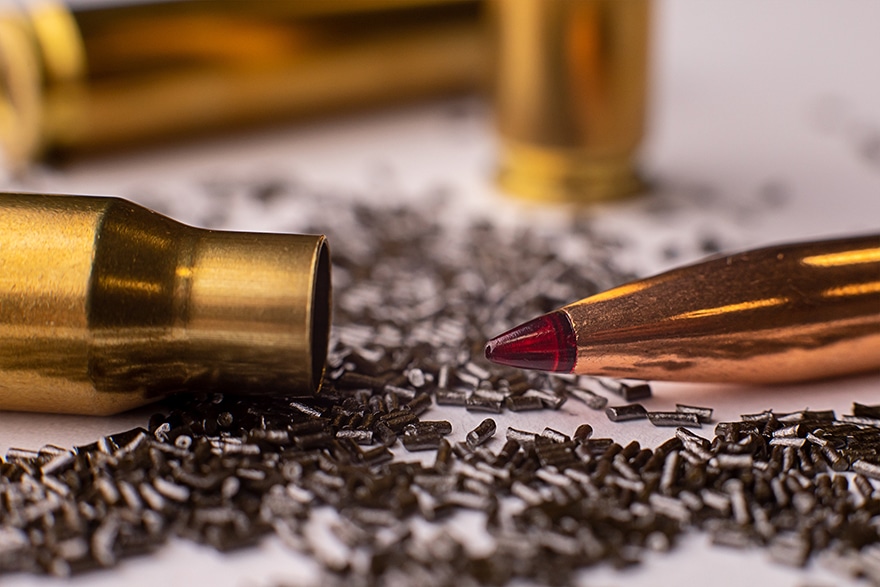
Here are some common associations with bullet tip colors:
- Black tips often indicate armor-piercing rounds. These rounds are designed to penetrate armored targets effectively.
- Blue tips usually denote incendiary or practice rounds. Incendiary rounds are designed to ignite targets upon impact.
- Red or pink tips are almost always tracers. Tracer rounds leave a visible trail of light or smoke, assisting in target tracking and adjustment of aim.
- Green tips frequently indicate armor-piercing or incendiary rounds. However, it’s important to check with the manufacturer for the precise features of each round.
- White tips often represent a steel bullet core or short-range tracer rounds.
- Yellow tips can denote features such as bright light, tracer, high explosive, or heavy ball rounds.
- Orange tips are commonly used for specialized rounds, such as low ricochet or explosive rounds.
It’s crucial to consult the manufacturer’s documentation or contact them directly for accurate information on the specific bullet tip colors used in their ammunition.
Comparing Bullet Tip Colors Among Manufacturer Examples
| Manufacturer | Black | Blue | Red | Green | White | Yellow | Orange |
|---|---|---|---|---|---|---|---|
| Manufacturer A | Armor-Piercing | Incendiary | Tracer | Armor-Piercing or Incendiary | Steel Core | Bright-Light, Tracer, High Explosive, or Heavy Ball | Specialized |
| Manufacturer B | Armor-Piercing | Practice | Tracer | Incendiary | Short-Range Tracer | Tracer or High Explosive | Explosive |
| Manufacturer C | Armor-Piercing or Incendiary | Practice | Tracer | Incendiary | Steel Core or Short-Range Tracer | Heavy Ball or High Explosive | Low Ricochet |
The table above shows how manufacturers may assign varying meanings to bullet tip colors. Remember that these are just examples and that cross-referencing with manufacturer specifications is necessary to ensure accurate understanding.
Importance of Bullet Tip Color Coding
The color coding system on ammunition serves as a practical means of identification. By understanding the significance of these colors, users can easily differentiate between various types of rounds based on their purpose and functionality. This color coding system is beneficial for quickly identifying the correct ammunition under conditions of low light or high stress, such as in military or law enforcement operations.

Proper identification of bullet tip colors can prevent accidental use of the wrong ammunition, which could have severe consequences. For example, using armor-piercing rounds against soft targets or tracer rounds in situations where concealment is crucial can lead to
unintended harm or compromised operations. By adhering to the color coding system, users can ensure that they are employing the appropriate ammunition for their specific needs.
The Benefits of Bullet Tip Color Coding
The importance of bullet tip color coding extends beyond just functional purposes. It also enhances safety and efficiency in ammunition handling and distribution. When properly color-coded, ammunition can be quickly identified and sorted, reducing the chances of mix-ups or confusion. This is particularly valuable in scenarios where large quantities of ammo must be processed and distributed rapidly, such as during military deployments or law enforcement operations.
Additionally, bullet tip color coding aids in identifying ammunition during inspections, storage, and transport. Whether in an armory, warehouse, or field supply depot, accurately identifying the contents of ammunition containers becomes much easier when color-coded tips are present. This streamlines inventory management, reduces the risk of inventory errors, and

facilitates the overall maintenance and organization of ammunition stockpiles.
Advantages of Tip Color Identification Table
| Advantages of Bullet Tip Color Coding | Examples |
|---|---|
| Quick identification of ammunition type and purpose | Black tips for armor-piercing rounds |
| Enhanced safety by preventing the use of the wrong ammunition | Red or pink tips for tracers |
| Efficient ammunition handling, distribution, and storage | Blue tips for incendiary rounds |
| Reduces inventory errors and facilitates organization | Yellow tips for various features |
Overall, bullet tip color coding is a valuable tool that promotes safety, efficiency, and effective management in ammunition.
Differences Between Colored Tip and Non-Colored Ammunition
Colored tip ammo, with its distinctive color coding at the tip of each round, allows for quick and easy identification of the type and purpose of the bullet. On the other hand, non-colored ammunition, often referred to as ball ammunition, lacks this color coding system.

Colored tip ammo provides a visual indicator that can be crucial when time is of the essence, such as military or law enforcement operations. Users can distinguish between different types of
rounds by simply glancing at the color of the bullet tip. This can be particularly beneficial in low-light conditions or high-stress scenarios, where the ability to identify the correct round quickly is paramount.
Non-colored ammunition, on the other hand, may still have specific uses. Ball ammunition is often used for training, target shooting, and self-defense. However, it’s important to note that without the color coding system, extra caution and attention are required to ensure the correct round is selected.
Colored VS Non-Colored Ammo Identification
| Colored Tip Ammo | Non-Colored Ammunition (Ball Ammo) |
|---|---|
| Quick and easy identification | May require extra caution and attention |
| Enhanced safety in low-light or high-stress situations | Suitable for training, target shooting, and self-defense |
| Streamlined selection process | Requires additional verification |
Colored tip ammo provides a distinct advantage in quickly identifying the type and purpose of the bullet. Its color coding system enhances safety and efficiency in situations where split-second decisions matter.
Overview of Color-Coded Bullet Systems in Different Countries
Understanding the color-coded bullet systems used in different countries is helpful for anyone involved in ammunition. These color codes serve as a universal language, allowing users to identify the type and purpose of a round quickly. Let’s take a closer look at some of the commonly used bullet tip color codes around the world:
Russian Color-Coding System:
In the Russian military, different bullet tip colors represent specific characteristics. Black and red tips are used for armor-piercing/incendiary rounds, while violet and red tips indicate armor-piercing/incendiary/tracer rounds. This system helps Russian forces differentiate between various types of ammunition in combat situations.
Chinese Color-Coding System:
China employs a similar color-coding system, with black and red tips designating armor-piercing/incendiary rounds and green tips indicating tracer rounds. This system aids the Chinese military and law enforcement agencies in quickly identifying the purpose of each round.
Israeli Color-Coding System:
Unlike other countries, Israel combines bullet tip color and primer annulus color coding for their ammunition. This dual system ensures that the purpose and characteristics of each round are easily distinguishable, enhancing operational efficiency and safety.
NATO Color-Coding System:
NATO member countries follow a standardized color-coding system that simplifies ammunition identification. This system assigns specific colors to different bullet types: red for tracer rounds, black for armor-piercing rounds, silver for armor-piercing/incendiary rounds, green for steel core rounds, blue for incendiary rounds, yellow for observation rounds, yellow-red for observation/tracer rounds, and orange for dark ignition tracer rounds.
Color Coding By Major Countries
| Country | Armor-Piercing/Incendiary | Armor-Piercing/Incendiary/Tracer | Tracer |
|---|---|---|---|
| Russia | Black and red tips | Violet and red tips | N/A |
| China | Black and red tips | N/A | Green tips |
| Israel | Color-coded tip and primer annulus | N/A | N/A |
| NATO Countries | Black tips | Silver tips | Red tips |
These color-coded bullet systems assist with the safe and efficient use of ammunition across different countries. While these examples provide a general overview of color coding practices in certain countries, it is important to note that variations may exist. Refer to the manufacturer’s documentation for accurate information on bullet tip colors and their meanings.
Legal Considerations and Restrictions with Colored Tip Ammo
When purchasing and using colored tip ammunition, it is essential to be aware of any legal restrictions or regulations that may apply. While colored tip ammo is widely available and much is legal to purchase, there are specific considerations to remember.
The Bureau of Alcohol, Tobacco, Firearms, and Explosives (ATF) has attempted to regulate certain types of ammunition, such as armor-piercing. However, these attempts have faced resistance as some do not meet the federal definition of armor-piercing ammunition. It is important to stay updated on the latest regulations and consult local

laws before purchasing or using colored tip ammo.
Purchasing ammunition from reputable sources that comply with legal requirements is always advisable. Buying from trusted manufacturers and distributors ensures you obtain ammunition that meets safety standards and legal guidelines. We recommend consulting with the manufacturer or retailer to ensure compliance with relevant regulations.
ATF Regulations on Colored Tip Ammo
The ATF has specific regulations regarding selling and possessing certain ammunition, including some colored tip rounds. These regulations primarily focus on the manufacturing and distribution processes to prevent unauthorized possession or use of certain ammo types.
| Regulation | Description |
|---|---|
| Armor-Piercing Ammunition | Individuals must be of legal age to purchase ammunition, typically 18 years or older for rifle ammunition and 21 years or older for handgun ammunition. Age restrictions may vary by state, so it is essential to be familiar with the laws in your jurisdiction. |
| Restricted Calibers | Certain calibers, such as .50 BMG, may have additional restrictions due to their potential for use in criminal activities. These restrictions may vary by state, so it is crucial to check local laws before purchasing or possessing ammunition in these calibers. |
| Age Restrictions | Individuals must be of legal age to purchase ammunition, typically 18 years or older for rifle ammunition and 21 years or older for handgun ammunition. Age restrictions may vary by state, so you must be familiar with the laws in your jurisdiction. |
Complying with these regulations ensures the responsible and legal use of colored tip ammunition. As regulations can vary by jurisdiction, it is always advisable to consult local laws and regulations to stay informed and avoid legal complications. Stay mindful of legal considerations to enjoy your shooting activities within the boundaries of the law.
Shooting Range Restrictions

Shooting range restrictions on colored tip ammunition are often implemented to enhance safety at the facility. When used in civilian shooting ranges, it can pose increased risks due to the potential for fires and ricochets. These ranges typically restrict colored tip ammo to mitigate these risks and maintain a controlled and safe environment for shooters.
Exploring Other Types of Tipped Ammunition
While colored tip ammunition serves as a useful indicator of a round’s purpose and functionality, there are other types of tipped ammunition worth considering. These variants offer specialized features and cater to specific needs. Let’s take a closer look at two intriguing examples: blue-tipped ammo and black-tipped ammo.
Blue-Tipped Ammo: Incendiary Rounds
Blue-tipped ammunition is often associated with incendiary rounds. These rounds are designed to ignite upon impact, potentially causing fires or explosions. Incendiary ammunition has various applications, including military uses, where it can be deployed for destroying fuel and ammunition storage, as well as for signaling purposes. However, it’s important to note that incendiary ammunition may be subject to legal restrictions in certain jurisdictions, so consulting local laws before purchasing or using these rounds is essential.
Black-Tipped Ammo: Armor-Piercing Rounds
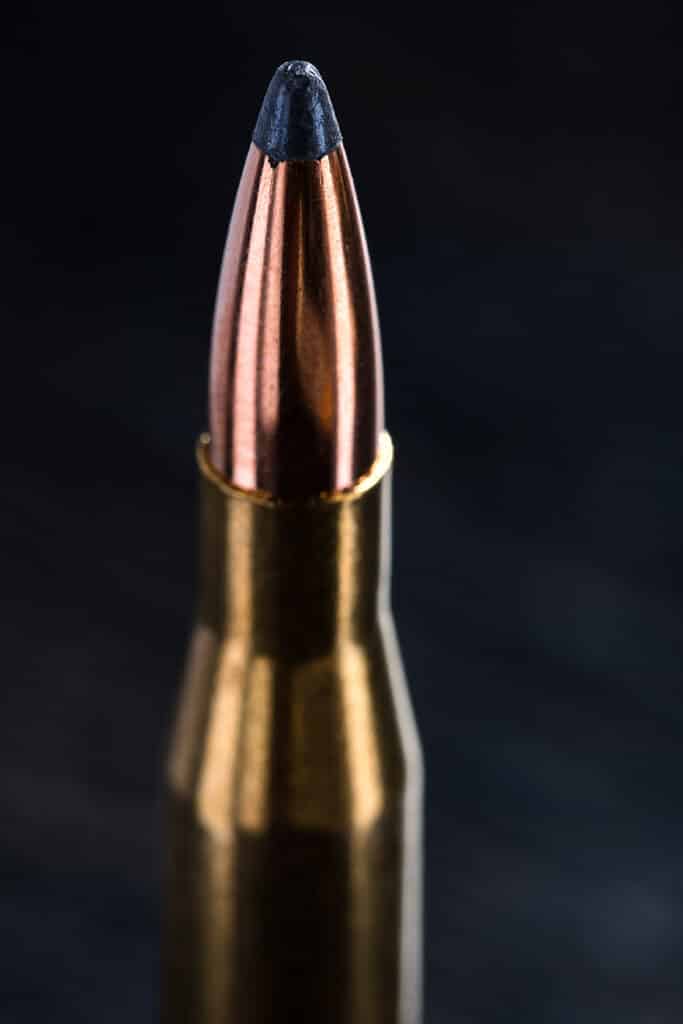
Black-tipped ammunition is typically reserved for true armor-piercing rounds. These rounds are designed to penetrate armored targets, such as vehicles or fortifications, more effectively than standard ammunition. Due to the potentially hazardous nature of armor-piercing rounds, they are often restricted to military and law enforcement use, and their availability to the general public is limited. It’s crucial to emphasize that unauthorized possession or use of armor-piercing ammunition can have severe legal consequences, so it’s essential to comply with applicable regulations.
These are just two examples. It’s worth exploring other variants to gain a broader understanding of the diverse options available.
Table: Comparison of Blue-Tipped and Black-Tipped Ammo
| Blue-Tipped Ammo | Black-Tipped Ammo | |
|---|---|---|
| Associated Color | Blue | Black |
| Typical Purpose | Incendiary | Armor-Piercing |
| Applications | Military, signaling | Military, law enforcement (restricted) |
| Legal Considerations | Potential restrictions | Restricted, significant legal consequences for unauthorized possession or use |
Understanding Tracer Rounds and Their Uses
Tracer rounds, denoted by orange or red tips, contain a small pyrotechnic charge in their base, which ignites upon firing and creates a visible trail toward the target. Tracers are commonly employed in military training exercises, aiding in target acquisition and providing real-time feedback on shot placement. Additionally, they play a crucial role in nighttime operations, where visibility is limited. The luminous path left by tracer rounds assists shooters in adjusting their aim and maintaining accuracy in low-light conditions.
Tracer rounds are also popular in target shooting competitions and recreational shooting activities. The visible trajectory of the tracer helps shooters evaluate their marksmanship, allowing them to make necessary adjustments and refine their shooting skills. Additionally, tracers can be utilized for marking targets during group or

team shooting exercises, enhancing coordination and communication among shooters.
Tracer Round Variations
Note that different tracers offer distinct advantages and applications. Bright tracers are highly visible and are suitable for daytime shooting or when shooting at longer distances. Subdued tracers, on the other hand, are designed for low-light conditions, ensuring minimal disruption to night vision while still providing visibility. Tracers are also available in infrared variants, primarily used for specialized military or law enforcement operations where covert communication or target marking is required in night vision environments.
Tracer Rounds Identification Table
| Tracer Rounds | Key Uses | |
|---|---|---|
| Bright Tracers | – Daytime shooting | – Long-range shooting |
| Subdued Tracers | – Low-light conditions | – Nighttime shooting |
| Infrared Tracers | – Night vision operations | – Covert communication |
Polymer-Tipped Bullets and Their Benefits
Polymer-tipped bullets have gained popularity among shooters due to their numerous advantages. These bullets feature a polymer tip that enhances their ballistics, accuracy, and terminal performance upon impact. The polymer tip serves as a protective covering over the bullet’s lead core, preventing deformation and maintaining its shape during flight. This results in improved accuracy and increased downrange energy.
One of the key benefits of polymer-tipped bullets is their controlled expansion upon impact. The polymer tip initiates rapid expansion upon contact with the target, creating a larger wound channel and delivering more stopping power. This controlled expansion reduces the risk of over-penetration, making polymer-tipped bullets suitable for hunting and self-defense applications where terminal performance is crucial.
Additionally, polymer-tipped bullets offer superior aerodynamic characteristics. The streamlined design of the polymer tip reduces drag, allowing the bullet to maintain a flatter trajectory and retain higher velocities over longer distances. This translates to increased accuracy, reduced wind drift, and improved performance in long-range shooting scenarios.
Benefits of Polymer-Tipped Bullets
- Enhanced Ballistics: The polymer tip improves bullet aerodynamics, resulting in higher velocities, flatter trajectories, and reduced wind drift.
- Improved Accuracy: The consistent shape and balance of polymer-tipped bullets contribute to enhanced accuracy by reducing variations in flight paths.
- Controlled Expansion: Polymer-tipped bullets provide controlled and reliable expansion, maximizing stopping power while minimizing the risk of over-penetration.
- Effective Terminal Performance: The rapid and controlled expansion of polymer-tipped bullets creates larger wound channels, ensuring efficient energy transfer to the target.
Conclusion: Understanding What Bullet Tip Colors Mean on Ammo
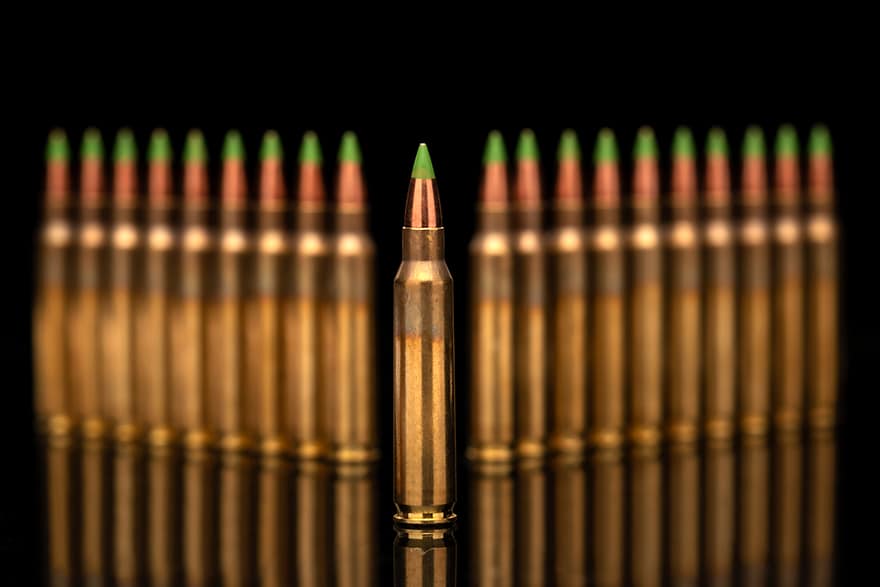
Understanding the meanings behind bullet tip colors is crucial for anyone handling or selecting ammunition. By familiarizing ourselves with the color-coding system, we can quickly identify the type and purpose of each round, ensuring we choose the right ammunition for our specific needs.

While color coding practices vary between manufacturers and countries, some general commonalities can guide us. For example, black tips often indicate armor-piercing rounds, blue tips usually denote incendiary or practice rounds, and red or pink tips are commonly tracers. However, it’s important to consult the manufacturer’s
documentation or contact them directly for accurate information, as color codes can differ.
This knowledge empowers us to make informed decisions when selecting ammunition for self-defense, target shooting, hunting, or other purposes. It also helps us navigate the world of bullet tip colors and ensures our safety when handling different rounds.
Remember, always follow local laws and regulations when purchasing and using ammunition, and rely on reputable sources for your ammunition needs. Stay safe, and enjoy your shooting experience!
Key Takeaways:
- Bullet tip colors on ammo indicate the type and purpose of each round.
- Black tips often signify armor-piercing rounds, while blue tips usually denote incendiary or practice rounds.
- Red or pink tips are almost always tracers, leaving a visible trail towards the target.
- Green tips frequently indicate armor-piercing or incendiary rounds.
- White tips represent a steel bullet core or short-range tracer rounds.
FAQs: Understanding What Bullet Tip Colors Mean on Ammo
Bullet tip colors on ammo serve as a color-coding system to convey important information about the type and purpose of each round.
The British Royal Navy was one of the first to adopt color coding in the mid-19th century, marking different shell types with colored bands. This practice spread globally, improving safety and efficiency in identifying ammunition types.
While specific meanings can vary, black tips often signify armor-piercing rounds, blue tips usually denote incendiary or practice rounds, and red or pink tips are almost always tracers.
Bullet tip color coding allows for quick identification of the type and purpose of a round, especially in low-light or high-stress situations like military or law enforcement operations.
Colored tip ammo has a color identifier at the tip, which indicates its type and purpose. Non-colored ammunition, often called ball ammunition, lacks this color coding.
Different countries have their color-coding systems. For example, Russia uses black and red tips for armor-piercing/incendiary rounds. NATO countries follow a standardized system with red for tracer rounds, black for armor-piercing rounds, and more.



